It’s autumn in Colorado. The trees are lit up in yellows and reds, some of the branches are starting to look bare, and the world in places looks like a patchwork quilt—orange here, brown there, pale green and yellow over there—where the leaves have all let loose and gathered on the ground. We had our first snow yesterday, a steady one all morning that didn’t end up accumulating much. But it’s a sign that there is more on the way. There’s something poignant about seeing the snow pile up on the leaves, layering the landscape with colors and with white.
To give away the ending, this is a post about how we should feel about those leaves, and what we should do about them. My thesis: we should feel good about them, and we should do nothing. Do not rake them up. Do not blow them into piles. Do not throw them out with the trash. Leave them right where they are.
I know, I know. This goes against everything you know. We’ve all been taught, as part of the Lawncare Industrial Complex, that leaves are an eyesore and a nuisance to our neighbors that should be removed as quickly as possible. Best to scoop them up quickly, the story goes, lest they obscure the view of our lawns too long. (Spoiler alert: lawns are bad, and obscuring lawns is a great idea). So we fire up our leaf blowers and blow the leaves into piles. (Did you know that leaf blowers are one of the single worst things for the environment, and that 30 minutes of a gas-powered leaf blower emits more pollution than driving a Ford Raptor from Texas to Alaska?). From there, some people might compost the leaves, but many people just throw them out with the trash—about eight million tons of leaves every year—that just end up in landfills. This is profoundly bad and stupid.
I hope that the previous paragraph would be enough to convince us all to just leave our leaves where they are. They’re good for the already-limited ecosystems in our lawns, and removing the leaves is terrible for the planet. But the social pressure to rake them up or blow them into piles is intense, and it takes courage to leave them where they are. So, here’s another perspective: leave the leaves where they are, as a gift to ourselves, to help us think about what it means to live within time.
What it means to live within time? Here’s what I mean by that. The earth moves in seasons, and our bodies have evolved to live in those seasons. Our ancestors knew what foods were available in different times of the year, and where to migrate to find them. Our forebears understood how to read the world for signs—signs of an impending rain, signs of the first frost, signs of ripening fruit. We have lost much of that knowledge; we can buy strawberries in January and eat apples and onions that ripened up to a year earlier and have sat in cold storage ever since. We don’t notice the climate (or climate change) because we spend so much of our time in artificial spaces, HVAC’ed into comfort. Quick, what phase is the moon in right now? Chances are, you don’t know, or you only know vaguely. Your ancestors would have known.
This might sound like a problem of society, industrialization, and consumption, and it is. But I mean it as more than that. For me, this is a spiritual problem. We live outside of time, unmoved by the seasons and the rhythms of the world, unaware of the shifts in our own bodies in response to the movements of nature. We imagine that we are unmoored from everything else, sealed off in compartments. We deny life as we live and we deny death when it comes; we do all that we can to pretend that we are immortal and incorruptible.
Maybe it’s grandiose to think about life and death alongside the leaves of autumn, but for me they are connected. The world changes all the time, moving in its cycles, and we work just as hard to deny those movements as we work to deny the shifts in our own lives. We water our lawns to make non-native grasses look green in the heat of summer, when no grasses like those ones should grow. We insist on grapes in all seasons. We work as hard as we can to deny the aging of our own bodies. And we can only tolerate leaves on the ground for a day or two, perhaps a weekend, before we rake up and throw away the evidence that the world is always changing, and that sometimes things do die. We can’t stand to live in any state of decay, or to be reminded that the world rests and renews itself just fine without any interference from us.
Leave your leaves on the ground. Let them rot into the soil. Let their nutrients feed next year’s growth. Let them blow against the weeds at the side of the yard; let them stick to your shoes and be tracked into the house. Leave them there to molder and to rustle, to sink into compost and down into the future. It will take courage to embrace the idea that all that death can lead to life, but in the springtime, your courage will be rewarded. When the new growth comes and the old life passes into new, and the world remakes itself, you will see new leaves appear out of the elements of the old. Learn to live in that spiritual practice, expecting the renewal of the world.



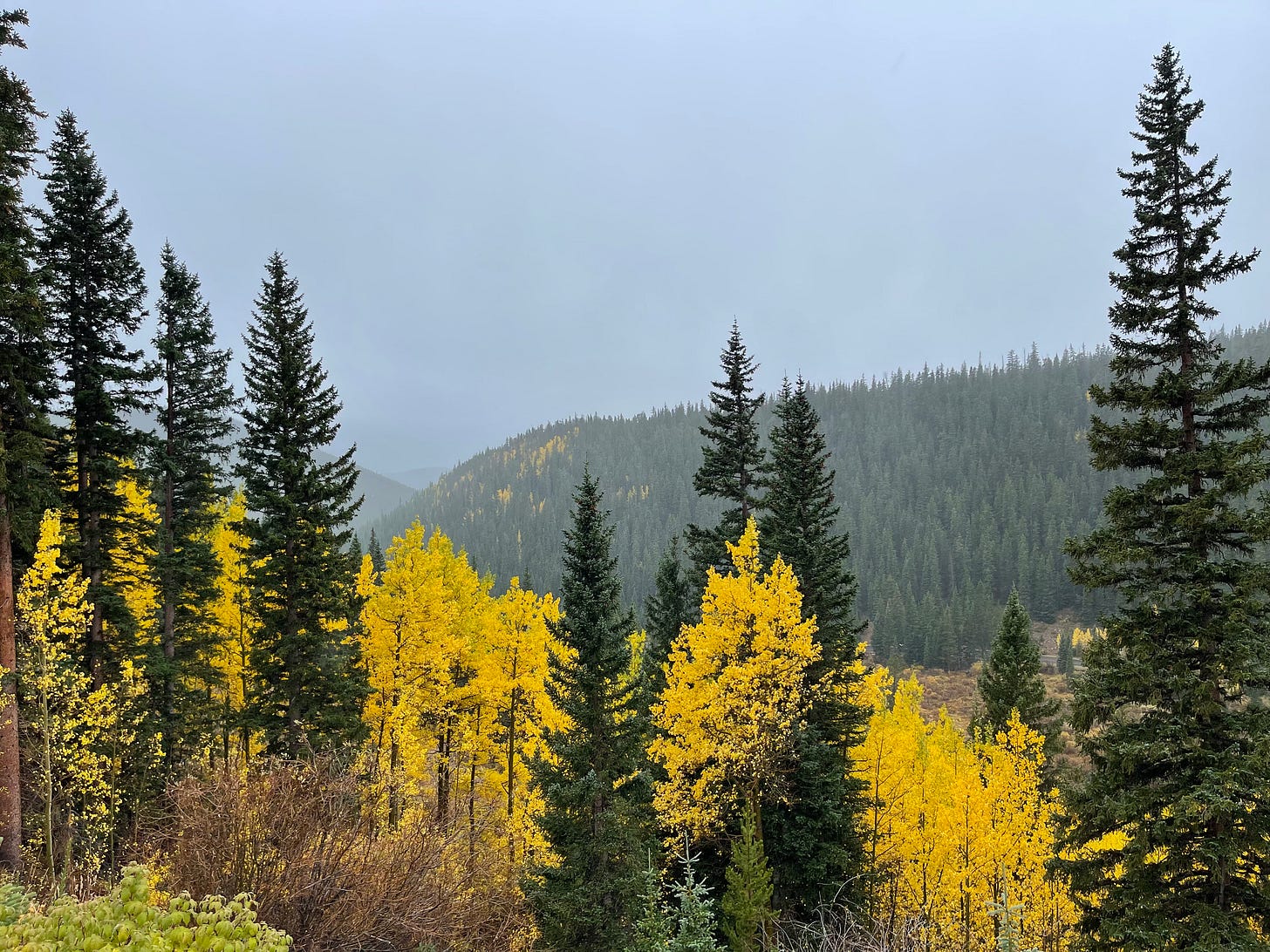
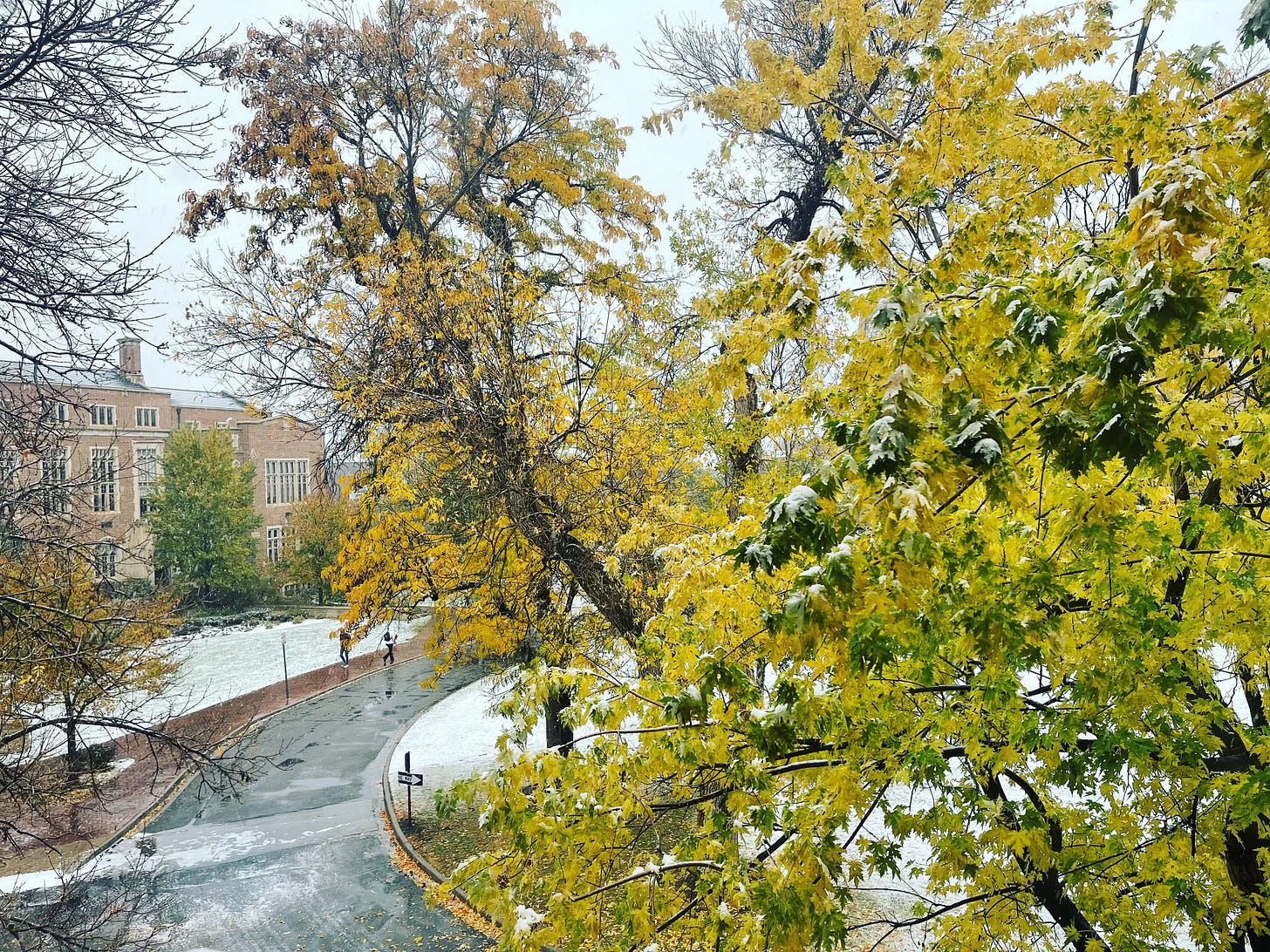
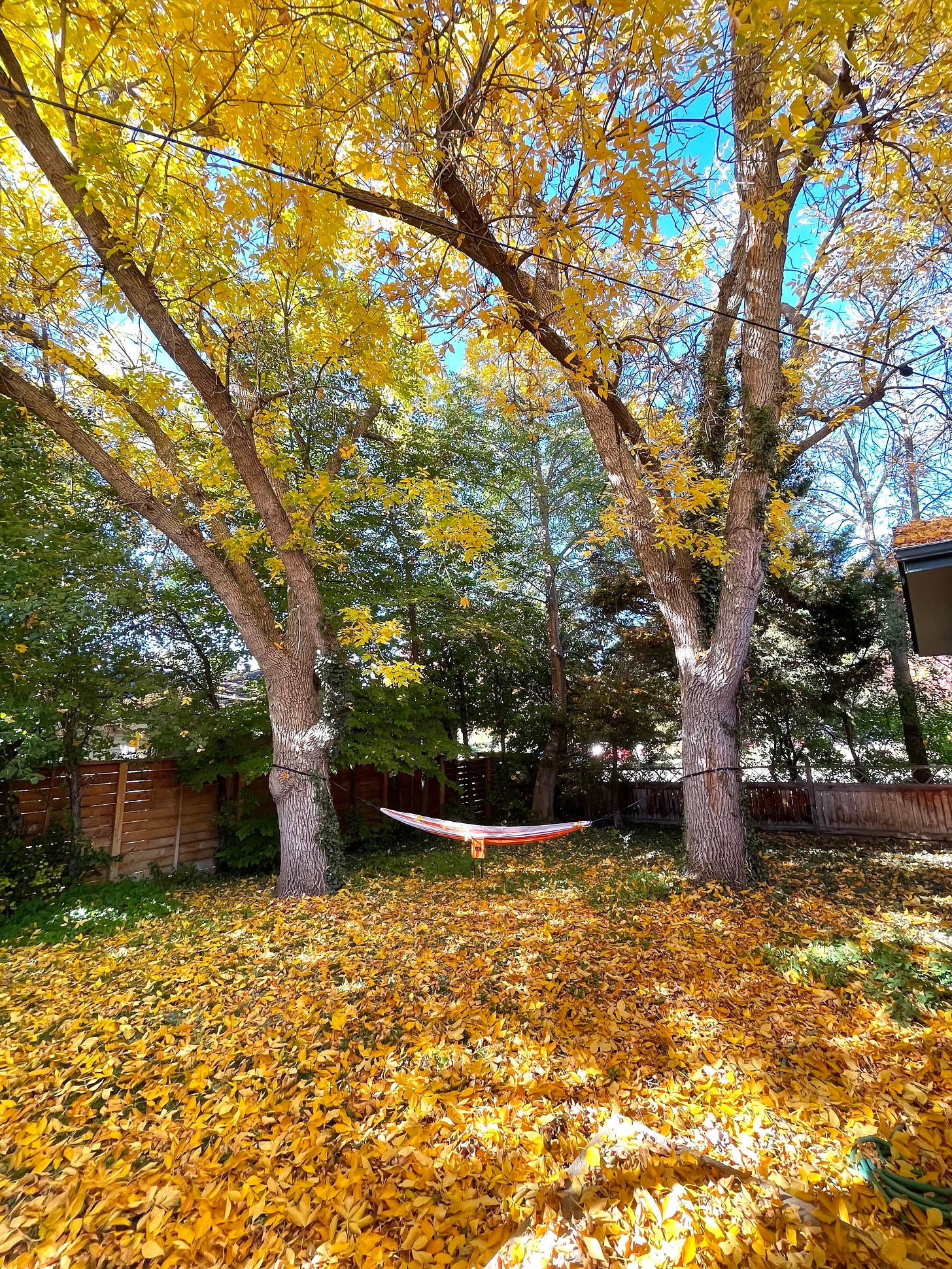

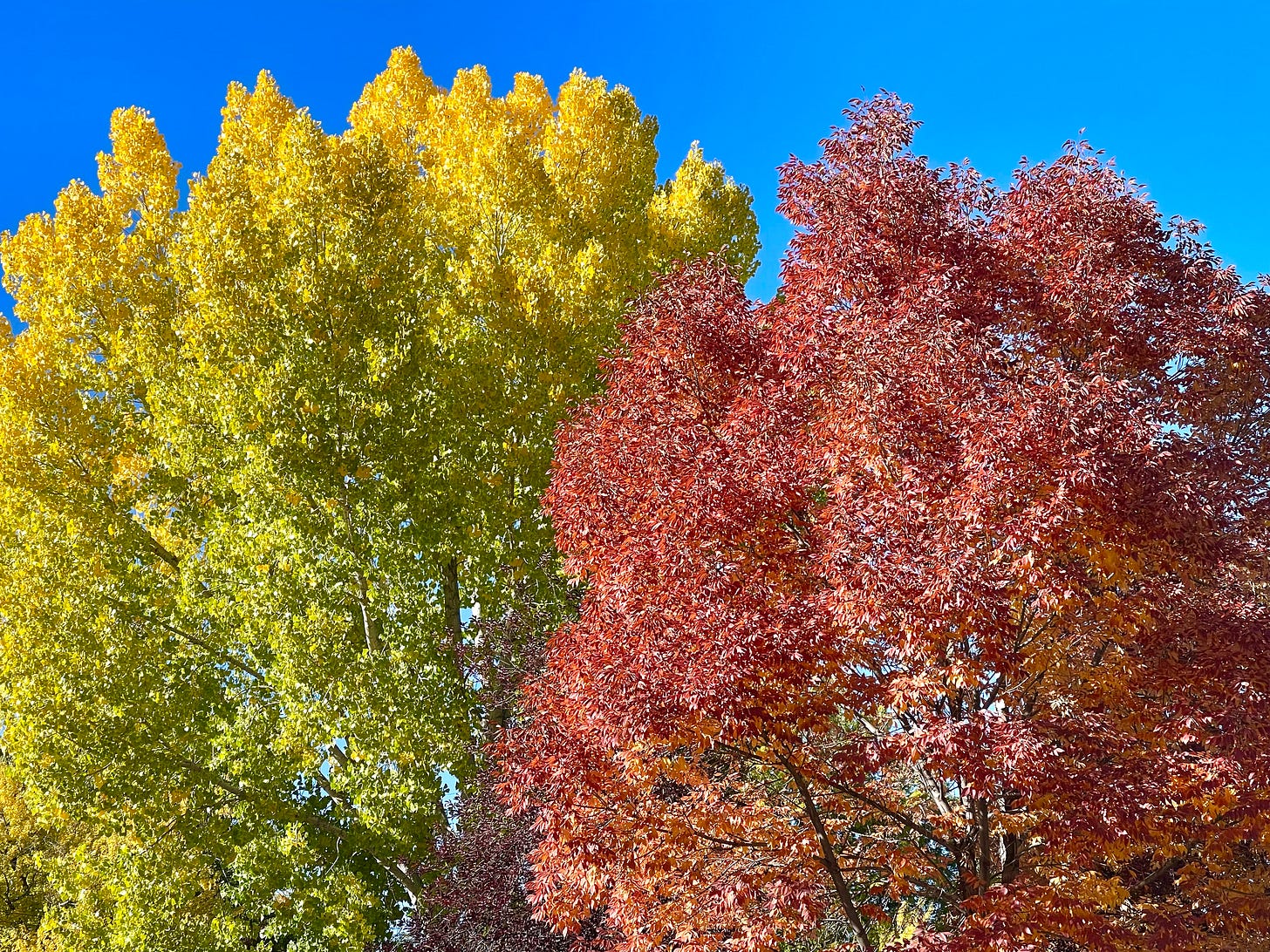
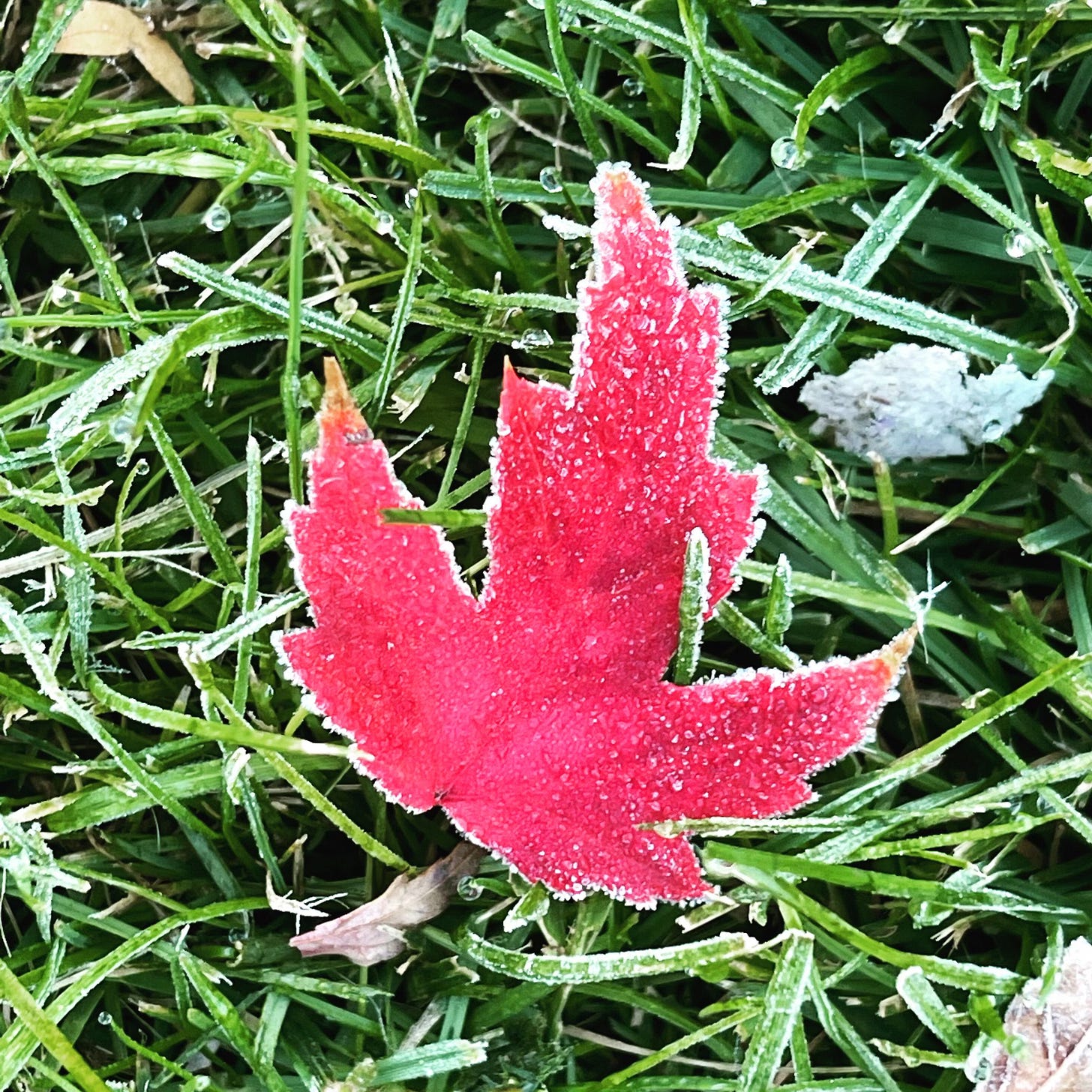
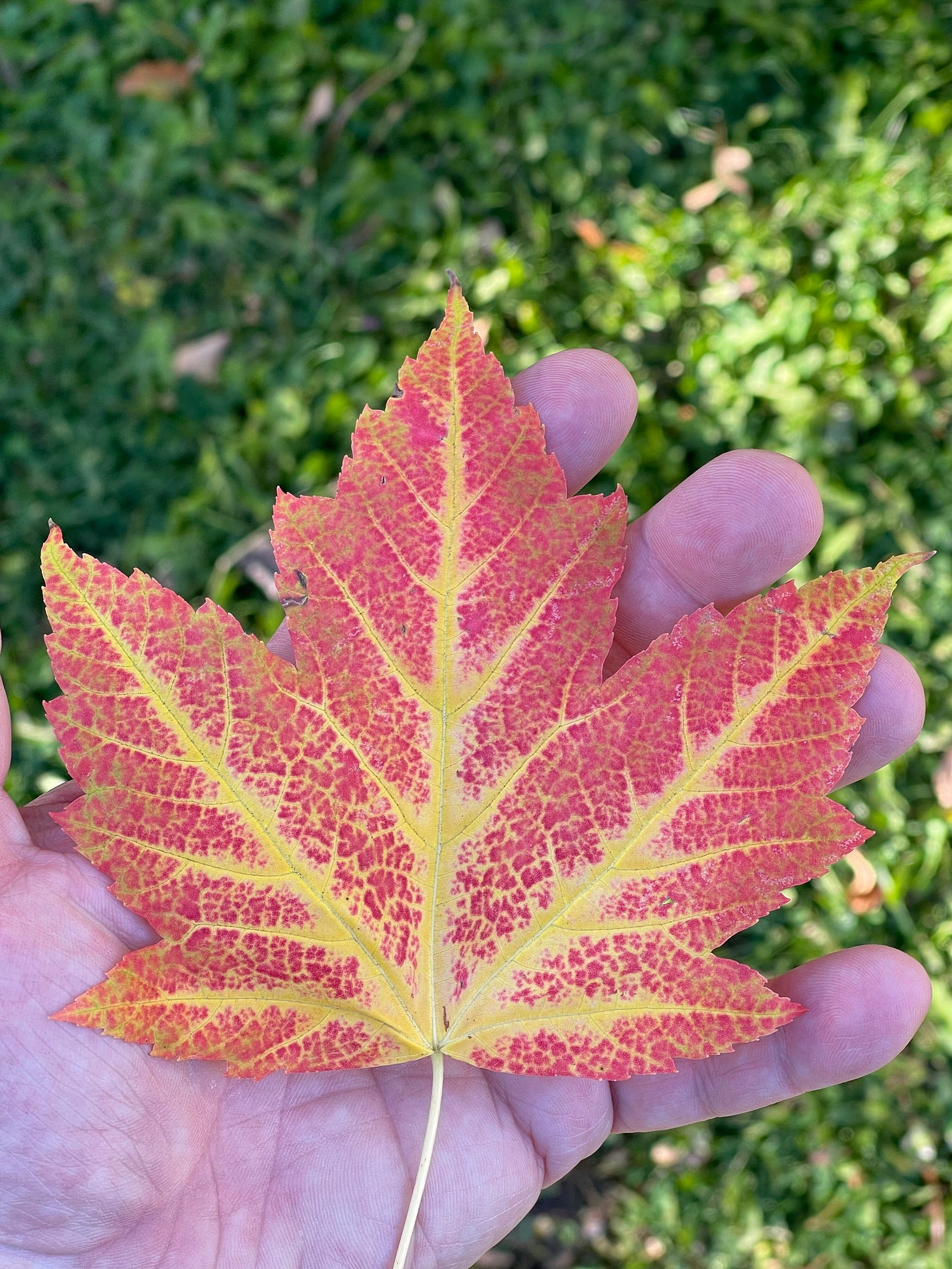
I first became acquainted with “deep time” when I read John Calderazzo’s “Rising Fire” about volcanoes and their geology. Provides an alternative perspective on one’s agency in one’s surroundings.
The seasons are a cycle, they are also an embodiment of the great circle of existence: Spring is renewal, rebirth; summer is growth, fruition and abundance; fall is harvest, divesting of the growth; winter is the healing and dormant recharging.
In the scheme things the falling leaves cover, shelter. On the ground through the winter they form a layer of protection, form the basis of the coming renewal. In the spring we can run the mower over the now partially composted, decayed leaves to turn them into a finer mulch through which the renewal of growth will emerge in the spring.
Throughout the late fall and winter the leaf covering will harbor all kinds of critters, busy munching away on them. Winter birds will forage among the leaves for those critters, nourishing themselves, helping the birds to survive the cold of winter. Ultimately the nutrient in those leaves will return to the environmental soil maintaining the health of the flora and fauna.
Ours all go eventually through the City of Denver's composting system, though many are retained under the shrubs to become part of the local renewal cycle.